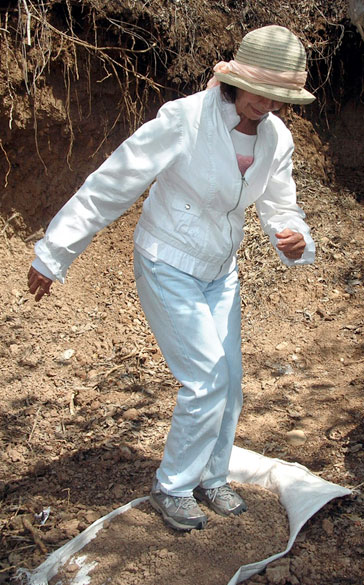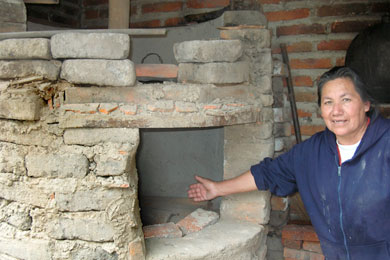 The small towns around Lake Cajititlán are known for their arts and crafts, but locating the artisans is sometimes quite difficult, as they tend to work unobtrusively inside their homes or under a shade tree in the backyard. In San Juan Evangelista, however, you will actually find a Plaza de los Artesanos, surrounded by workshops where lumps of clay are turned into works of art.
The small towns around Lake Cajititlán are known for their arts and crafts, but locating the artisans is sometimes quite difficult, as they tend to work unobtrusively inside their homes or under a shade tree in the backyard. In San Juan Evangelista, however, you will actually find a Plaza de los Artesanos, surrounded by workshops where lumps of clay are turned into works of art.
In one of these talleres we walked in on Martín Navarro Ibarra, who was intently working on a beautiful figure of an owl which—when he turned it—proved to be a pencil holder as well. Several other unfinished pieces lay on his desk, each one demonstrating the extraordinary imagination, skill and attention to detail of this master sculptor.
When we asked him about the tradition of ceramic-making in San Juan, Navarro Ibarra told us that in his town, three generations have been developing their skills in this medium, all of them inspired by his great uncle, Don Sixto Ibarra (1928-2001) who, it seems, became interested in ceramics when he found figurines in a shaft tomb near the town. “My great uncle started out trying to duplicate the ancient pieces he had found, but ended up founding a school of creative sculpting, especially in the medium of burnished clay.”
Not knowing much about pottery, I asked what burnishing means. Martín explained that it involves rubbing the outside of the pot with a hard (often metal) tool which rearranges and compresses the surface particles of clay, resulting in a smooth, even texture which almost looks like a glaze. Martín then showed us his favorite burnishing tool: a stainless steel valve taken from a car’s engine. “It’s the very best thing I’ve found for doing the job,” he swears.
Having discovered that the basalt sculpting of nearby San Lucas probably goes back to pre-Hispanic times due to the abundance of natural raw material just outside the town, I asked Martín Ibarra whether there happened to be a source of modeling clay near San Juan.
 “Actually, there is very good clay just a 40-minute walk from here,” he told us, “and this is what I always use. I suspect the same clay was also used to make many of the ancient figurines found in this area.”
“Actually, there is very good clay just a 40-minute walk from here,” he told us, “and this is what I always use. I suspect the same clay was also used to make many of the ancient figurines found in this area.”
This added strength to my theory that the tradition of arts and crafts around Lake Cajititlán preceded the arrival of the Spaniards and this supposition was again confirmed when Martín took us inside the church of San Juan, completed by the Franciscans in 1617. “I think all the sculpting and carving was done by local people,” he told us, “and you’ll notice that most of the angels look like natives of San Juan.”
To my wife and me, several of those faces look very much like Martín’s, as a matter of fact.
*Restricted Article* - To view rest of this content, please login or register..
| < Prev | Next > |
|---|
Comments
que personalmente haberme traído la copia del semanario con el reportaje de San Juan Evangelista.
Atte: Martin Ibarra Morales Artista del Barro.
Email. art-ibarrahotmail.com -- ibarra087gmail.com
Telefono : 37530017
RSS feed for comments to this post